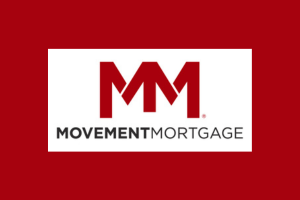Fed’s latest hike pushes mortgage rates down

A 10th straight hike brought us to a 16-year high of the federal funds rate this past week as the Federal Open Market Committee approved a 25-basis point rate increase. Now, the overnight lending rate stands at 5.25%. The move was highly anticipated, and expected, but the FOMC members made a notable omission in their language announcing the hike—they took out the wording that indicated future rate hikes are likely.
The announcement was a boon for the mortgage industry on the day of the announcement as the 10-year Treasury note continued on a strong downward trend. The 10-year yield started the week at a high of 3.57% when markets opened on May 1 and ended Thursday trading at 3.35%—a 20-basis point dip that spurred a flurry of rate-lock activity.
Yields dropped because, quite simply, investors are spooked that the Fed’s move will negatively affect more banks and plunge the economy into a recession. When investors get fearful, they move their money into the relative stability of government-backed bonds, like the 10-year Treasury note, which drives price up and drives yields down.
A day before the Fed’s announcement, yet another major bank was taken over by the FDIC and then sold to J.P Morgan Chase. The bank, First Republic, reported it lost $100 billion in deposits over the last year as the Fed raised interest rates and bank customers moved their money into higher performing assets. Consequently, the Fed raising rates again in an already weak bank-earnings environment prompted investors to flee to the safer bet fearing more bank collapses.
This contributed to the plague of uncertainty that continues to hover over the global economy as many central banks make an effort to stay out of a recession. The Fed’s latest hike is an effort to do just that although chairman Jerome Powell made note in his press conference that the labor market remains tight and acknowledged the higher borrowing costs “are likely to weigh on economic activity, hiring and inflation.”
The April jobs report from the Labor Department was released just two days after Powell’s speech and reflected the language he used. The report showed 253,000 jobs were added in April, well ahead of the expectation for 180,000 jobs—indicating the labor market is still extremely strong despite a clearly slowing U.S. economy. The unemployment rate was 3.4% which went against estimates of 3.6%. Wage growth also beat expectations, increasing 4.4% year-over-year against the 4.2% forecast.
Earlier in the week, ADP released its private payrolls report showing a much higher than expected reading. Private payrolls added 296,000 jobs in April, according to the data, well ahead of the estimated number of 133,000. This was the highest monthly increase for private payrolls since July of last year.

MORTGAGE WORLD REMAINS EXTREMELY SENSITIVE
One thing every mortgage originator is craving right now is stability in pricing. Borrowers are always wanting to wait for the best rate, but that timing has become extremely hard to predict over the last year causing a lot of frustration in the housing world.
The 30-year fixed-rate mortgage average moved to 6.39% this last week, according to Freddie Mac. The group’s analysts wrote in their report that, “This week, mortgage rates inched down slightly amid recent volatility in the banking sector and commentary from the Federal Reserve on its policy outlook. Spring is typically the busiest season for the residential housing market and, despite rates hovering in the mid-six percent range, this year is no different. Interested homebuyers are acclimating to the current rate environment, but the lack of inventory remains a primary obstacle to affordability.”
It is important to keep in mind that while you might be conditioned to look for the lowest rate, that may not always be your best option. Also, many times the eye-popping low rates that are advertised require you to buy down the rate with points. One discount point generally costs about 1% of your loan amount and, while it varies by lender, will often result in a .25% reduction in interest rate. This money is applied to your closing costs and could add up very quickly and may not be worth it in the long run.
It’s best to walk through every scenario with a local Movement Mortgage loan officer who can give you a long-term financial picture of home financing versus just getting the lowest rate right now.


 Facebook
Facebook
 X
X
 Pinterest
Pinterest
 Copy Link
Copy Link

